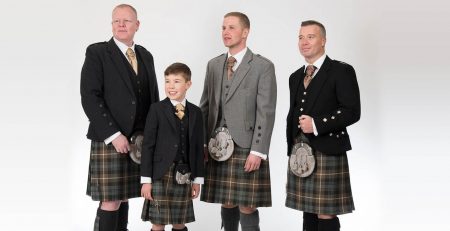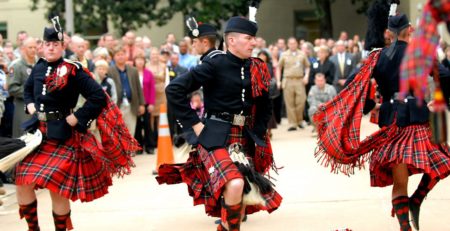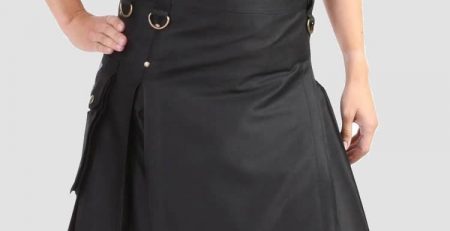What countries wear kilts?
Clothing acts as the factor when it comes to the expression of personality, culture, tradition, and background.
In this article, we are going to talk about the highlander’s outfit that has to gain massive popularity all over the globe.
Highlanders kilt are mostly known for the Kilts that is a knee-length short skirt-like piece of clothing.
Highlander were not the only people who wore this outfit; so, if you want to learn what countries wear kilts, then stay tuned and give this article a good read.
A decade ago, only Ireland and Scotland wore the Kilts. Now the world has adopted the latest trends of fashion kilts that are high in demand worldwide.
Although kilts are part of the culture of both Ireland and Scotland, it can be worn by anyone without restriction.
List of Top Countries
The kilt, a knee-length garment typically made of wool and associated with Scottish culture, is most commonly worn in Scotland. However, variations of kilts or kilt-like garments can be found in several other countries, each with its unique style and cultural significance. Here’s an in-depth look at countries where kilts or kilt-like garments are worn:
Scotland: Traditional Scottish Kilt
The most well-known and iconic kilt is the traditional Scottish kilt, which originated in the Highlands during the 16th century. It is a symbol of Scottish heritage and is often worn at formal events, weddings, and other special occasions. The tartan pattern of the kilt can represent a specific clan or family.
Ireland: Irish Kilts
While the traditional Irish dress is the kilted skirt, often associated with Irish dancing, there is a resurgence of interest in Irish kilts. These kilts may have distinct patterns and are worn by some individuals as a way to celebrate Irish culture.
Wales: Welsh Kilts
In Wales, there is a tradition of wearing kilts, particularly as part of Welsh national dress. The Welsh kilt is often made of tartan or plaid fabric and is worn on formal occasions, similar to the Scottish kilt.
Isle of Man: Manx National Dress
The Isle of Man, a self-governing British Crown Dependency, has its traditional dress, which includes a kilt-like garment. The Manx kilt is part of the national dress and is often worn on ceremonial occasions and during cultural events.
Cornwall (United Kingdom): Cornish Kilts
In Cornwall, a region in the southwest of England with a distinct Celtic identity, there has been a revival of interest in Cornish kilts. These kilts are often seen at cultural events and celebrations.
Galicia (Spain): Galician Kilts
In the Galicia region of Spain, there is a traditional garment called the “faldón” or “chaqueta,” which resembles a kilt. It is worn by traditional folk music and dance groups during performances and festivals.
Brittany (France): Breton Kilts
The traditional costume of Brittany, a region in France with strong Celtic ties, includes a kilt-like garment known as a “bragou-braz.” This traditional attire is worn during cultural events and festivals.
Asturias (Spain): Asturian Kilts
In the Asturias region of Spain, men traditionally wear a kilt-like garment called “faldón asturiano” during folk festivals and cultural events.
It’s important to note that while these regions have garments resembling kilts, the style, fabric, and cultural significance can vary widely. The adoption and revival of kilt-like garments in these areas often reflect a desire to celebrate and preserve local cultural traditions.
Did the English wear Kilts?
When it comes to the British Isles, the Kilts are mostly affiliated with Scotland and scarcely with Ireland. However, the young British boys started wearing Kilts in the 1840s. The boys wear kilts as the dress garments.
Do the Irish wear, Kilts?
As mentioned earlier, Kilts are as much part of the Irish culture as it is of Scotland. Though Kilts arrived late in Ireland, both the countries have their fair share of this piece of clothing.
Both Ireland and Scotland possess a rich Celtic heritage.
A Kilt is thus a symbol of pride for Celtic culture. Both the countries prefer wearing the kilt however; there are several differences in them.
Who wore the Kilts first?
The people started wearing Kilts in 1538.
Those people were Gaelic speaking Highlanders residing in Scotland. At first, Kilts tailored to be lengthy almost till the ankle, as the trends of fashion evolved, the kilts became shorter.
The preferred length becomes to the knees. So, the ankle-length Kilts were worn by the Scottish people in the 18th century.
Why and when was Kilts banned in Scotland?
Back in the old days, Kilts were worn as the uniform in the battleground that gave the outfit a new symbol of Scottish descent. In the battle of Culloden, the Jacobites lost the rebellious war in the year 1746 that is when the kilts were banned by England.
The kilts were banned for almost 26 years and were resumed with severe penalties.
In the 19th century, the Royal Family accepted the Kilts to be a proper mode of dressing once again.
Final words:
If you like Kilts and are curious about its history then this article is the answer to your queries. We have thoroughly discussed what countries wear kilts and the significance of this outfit with a little back story. Kilt signifies pride for all those who are linked with the Celtic Heritage. The countries which wear Kilt as part of their tradition are Ireland and Scotland.






Comment (1)
Very interesting. I am of Irish Decent on both sides of me family from the mis 1840’s. I have a kilt and wear it on special occasions.